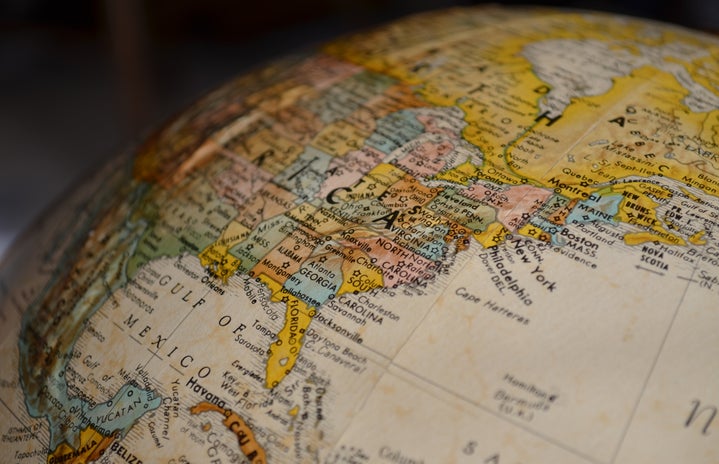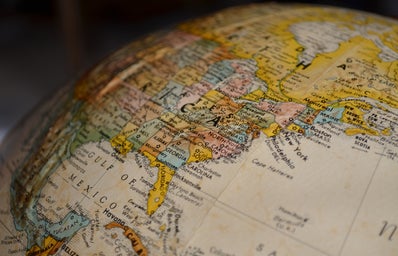A peaceful uprising within the context of the Arab Spring has become one of the most violent wars of our time. More than 10 years ago, on March 15, 2011, the Syrian War began, and since then it has claimed more than 380,000 lives, caused the disappearance of 205,000 people, and caused the flight of more than 11 million people.
- The history of the conflict
-
Despite being a recent war, the country has been going through a period of political instability since the 1980s. It was at this time that disputes between the Baath Party that was represented by Hafez al Assad- father of current dictator Bashar- and the Muslim Brotherhood, an international organization of Sunnis that was part of the opposition, became more heated.
“The central point of this issue was the secularity of the state and the ethnocentric policies in favor of Arabs, advocated by Hafez, to the detriment of the implementation of a theocracy or Islamic confessionalism in Syria, an idea promoted by the Brotherhood”, says Mateus Felipe Holtz, a graduate student in Geography, besides a master’s student and CAPES scholar in the Graduate Program in Geography, both at the Federal University of São Carlos.
With the death of Hafez and the arrival of Bashar to power, who had a discourse in favor of political, social and economic openness, caused the rise of organized opposition within the country and in the international community. They had demands that were aired in newspapers and forums around the world, especially in the US and Europe.
Thus, Bashar tried to control these oppositions through the parliamentary and legal arena, where his party had the most influence. He also adopted a more nationalistic discourse, in which he motivated citizens to react against these separatist and radical forces that were threatening the stability of the country. In this way, he consolidated himself as the national leader, with the support of the more moderate Sunni religious elite and media owners.
However, in 2011 the Arab Spring broke out across the Middle East and North Africa. Supported by Western powers, the revolutionary movements sought an improved quality of life, freedom of speech and politics, the overthrow of totalitarian regimes, and new elections. The protests were responsible for the fall of the governments in Tunisia, Egypt, and Libya. Thus, it did not take long for the ideals to invade Syrian territory, which was going through a critical moment due to disappointment with the policies adopted by Bashar and the poor quality of life in the country.
“Crowds protested in the streets of Damascus, using the same agenda presented so far in other countries – summarized in freedom of speech and political freedom. However, Assad’s miscalculated repression, with gunfire against the civilian population, arrests, and torture of organized groups, intensified the wave of protests, and at this moment there was a demand for Bashar’s resignation”, says Holtz.
“The population itself began to attack the government’s barracks and buildings. With a military character, the opposition is now called the Free Syrian Army. Internationally, Bashars former opponents shaped the image of the conflict and attracted the attention of heads of state and newspapers, reaching a global scope. “From this backdrop, the Kurds, traditional oppositionists to the government, ratified themselves as a parallel political, military and legal instance by conjuring up the Northern Syrian Democratic Federation, a territory covering about a third of Syria, in the border regions with Turkey and Iraq in the northeast, reaching near Aleppo, Afrin and Idlib further to the northwest”, he adds.
- The fronts involved
-
The Syrian conflict can become very confusing for some due to the number of parties involved. First, we have the union of the current government of the country, Hezbollah, Lebanese Shiite part; the President of Russia, Vladimir Putin; Iran and, occasionally, the Turkish Prime Minister. In opposition, there is the Free Syrian Army, which are the Sunni dissidents in Damascus, supported by the US, Israel, Saudi Arabia, France, England, Germany, Poland and a number of other European countries.
About the participation of Western powers in the conflict, the geographer Matheus Holtz affirms that “Imperialism is a state policy for the U.S. and for countries in Europe. That means that regardless of the government that is sworn in those countries, there will be some degree and some form of interference in the Middle East. At present, it is the manner of interference that varies: there is little or no room in public opinion and UN resolutions for the legal creation of protectorates or maintenance of colonies.”
“This means that in place of frontal military spoliation in these peripheral countries, there will actually be jointly a political and intellectual articulation in favor of liberal and socially progressive political values in order to propitiate an opening of these Middle Eastern states, for example, to Western diplomacy, as well as an hitching of economic production in these countries to the globally accepted economy and currency; thus, a cultural, political and also economic dependence is created. This is how contemporary imperialisms have developed, especially in regions with a recent history of Western colonialism, such as Syria”, adds Holtz.
“The international community acts and acts a lot in the Syrian Civil War: US, French, British soldiers, Israeli, Russian and German armaments, all of these are active in the conflict. The main issue is that this select international community, much more than the end of the conflict for humanitarian reasons, wants its belligerent side to win the conflict, regardless of what it costs, precisely to implement global diplomacy and economic policies that favor its domestic elites, who sponsor the Western governments themselves. Unfortunately, this is the real and pragmatic policy”, conclues the geographer.
With the chaos in the country, extremist jihadist groups, such as the Islamic State and Al-Qaeda, have also entered the conflict, following their own objectives. Western countries have made several strikes inside Syria against these groups, within the context of the war on terrorism. The last part is made up of the country’s ethnic minorities. The Kurds, who form the Democratic Federation, represents a Syrian political body parallel to the government in Damascus. This is made possible by their large population -about 10% of the country’s total- and consolidated political connections. They are part of the opposition to Bashar’s government and receive support from the United States.
The Assyrians on the other hand, reduced to a much smaller number, are still forming themselves as a nation, which makes them historically loyal to the Baathist government. It is only in the last few years that some of the Assyrians have come closer to the Kurdish resistance project, forming militias and participating in Kurdish parties, adding to the opposition. It is within this complex scenario that the war is taking place in the country. Each with distinct motivations and objectives, the actions of various fronts is one of the reasons that promotes the longevity of the conflict in Syria.
“The economic interests in this conflict lie in the attempt to rebuild Syria by the independent parties to the conflict, and on a larger scale, for control of more oil wells, pipelines, and overland routes for heavy goods from the Mediterranean Sea to the Persian Gulf. Similarly, political interests are represented by the Baath Party’s maintenance of power, the consolidation of the Northern Syrian Democratic Federation, political representation for ethnic minorities in Syria, and, on a global level, the contest between Russia and the US for cultural and political hegemony in the region”, continues Holtz.
- The current state of the conflict
-
Between the years 2015 and 2018, Bashar Al-Assad achieved major victories against the opposition and the Islamic State, retaking the main cities to government control and establishing peace in the countryside. This series of events meant that the Baath party virtually took the victory of the conflict.
“This was also due to a global conformation of global geopolitics and also US domestic politics that discredited the US role in the region, causing them to pull back. At the beginning of the conflict, Barack Obama backtracked and chose to move men into Syria in order to back it up as an adjunct along with the Free Army and then the Northern Democratic Federation. Donald Trump, in view of the success of Bashar and his allies and the considerable decrease in the danger of the Islamic State, undertook more diplomatic and military efforts against Iran, due to the rising nuclear program in the country, in order to maintain with the American interventionist state policy, thus reopening a new front of action”, attests Mateus Holtz.
Therefore, only one challenge remains today: defeating and retaking Kurdish territory. As the largest ethnic minority in Syria, the Kurds have important military connections with neighboring countries, besides having the military, economic and diplomatic support of the US in the conflict. According to the geographer, the reason for this support is quite simple and pragmatic: unlike the Free Army, the Kurds are fighting both the Damascus government and the Islamic State with the aim of becoming a political body of their own. Now, the expectation is a change in direction of the unfolding confrontation in Syria.
“The tendency is that now the conflicts will head north of the country, toward the Kurds, who were not the priority for combat of Damascus’s allies. First, it is quite understandable that no president would simply accept having a third of his country co-opted by an autonomous body. Second, Turkey was an important partner of Damascus in retaking important cities in the northwest of the country, which means that Bashar must provide aid on Erdoga’s behalf”, he adds.
But since the Kurdish party in Syria is closely linked to the Kurdish party in Turkey, neither government will accept this political and military organization on the borders of their respective domains. This fact opens a gap for the return of American action in the territory, constituting its second front in the Middle East: one in Syria and another in Iran. Joe Biden has already started this policy at the beginning of the year, by bombing barracks in the east of Syria, near the Iraq border.
On the political differences between the West and the East, Holtz reiterates that “what there should not be is the pretense of a moral and civilizational superiority of the West over the East only molded on a superficial and nominal model of democracy, of political freedom, of secularism, an idea easily conveyed by mainstream media, by classical academic studies of anthropology or philology, and by literature. Ideas previously conceived from a colonial and biased view of the Middle East”.
This idea, according to the geographer, consists in West thinking that they “should bring light to the darkness of the East, bring rationality to combat barbarism, democracy to overthrow dictatorship, freedom and secularism to unmask superstition and religiosity. We don’t have to bring anything to them, because Arabs, Kurds, Assyrians, Turks and other Eastern peoples, regardless of religion, are perfectly capable, intellectually independent and worthy of making their social, cultural and political choices, thus reaping the benefits and difficulties corresponding to their actions.”
- The refugees
-
The damage to the country caused by the war is incalculable. According to the Syrian Observatory for Human Rights, the fighting has left more than 2.1 million Syrians injured or permanently disabled. Of the more than 380,000 deaths, the vast majority – some 156,000 – have been caused by the government of Bashar Al-Assad.
In this scenario, what gained the most media attention during this period was the refugee crisis. Of the 22 million inhabitants that the country had at the beginning of the war, more than half had to leave their homes because of the conflict. According to UNHCR (UN Refugee Agency) data, 6.7 million Syrians are displaced within the country, while another 6.6 million are refugees scattered around the world – but are more concentrated in the countries bordering Syria. Inside the country, 13.4 million need humanitarian aid and protection for their survival.
Brazil is currently home to more than 10 thousand Syrian refugees. Despite the dismantling of policies for the reception of refugees, which began during Michel Temer’s government, many have found here a chance to start over and build a new life away from the chaos. However, the challenges are still many, such as the difficult insertion in the labor market, learning a new language, and social and economic obstacles.
This scenario has been aggravated by the covid-19 pandemic. While, in the receiving countries, refugees are left to face a worsening economic crisis, which makes it difficult to find a job and economic integration in the new place, those who are still located in Syria have yet another reason for concern. In addition to armed conflict, air strikes and bombings, new outbreaks of covid-19 also put the population at risk.
However, Holtz reiterates that the benefits of immigration for nations can outweigh the difficulties faced by countries at first, “while the problems of refugee immigration are all observable in a short period of time, the possible benefits will be seen only over long periods of time: besides the prestige position gained by a country that systemically and organizationally receives war refugees in the face of global forums and organizations, many Western countries, the Europeans for example, have an aging population, which brings problems such as social security imbalance and the lack of labor for scale production.”
About the Syria imigration to Brazil, the geographer affirms that the country “has a population growth rate and an average fertility rate lower than the numbers that ensure the replacement of the labor force in these countries”. So for him “the immigration of refugee families, ensuring people in broad age groups to develop their activities and lives in a new location is one possibility for these little explored internal problems.”
- The end of the war
-
About his expectations regarding the end of the conflict, which has been going on for more than 10 years, Matheus Holtz says “that is necessary to follow coherent methods to analyze present and past situations, and then only point out perspectives for new research. However, on the other hand, it is clear that as one advances in research, as one accumulates readings and reflections, as new facts come to light, leaving aside the supposedly methodical researcher’s complexion, we end up nurturing some personal opinions and projections.”
So the geographer believes that “precisely according to the last character, I believe that what we know as the Syrian Civil War, which began in 2011, and which culminated with the re-establishment of a good part of the Syrian territories under the auspices of Bashar al-Assad and the defeat, at least temporarily, of the Islamic State, has ended, passing through the rise and discredit of the Free Army. This is a first phase of the Civil War that has been finalized.”
But according to Holtz there is now and will continues in the future “a second phase of disputes, longer and probably slower, displaced to the north of Syria, involving the retaking of Kurdish territories for Damascus, also serving the interests of Turkey, in a scenario favorable for direct US action under Joe Biden in support of the Democratic Federation. Depending on new military, political and social weaknesses in the country, it is possible that terrorist cells linked to groups such as al Qaeda, al Nusra, the Islamic State and the Muslim Brotherhood will return to operate in Syria.”
The scenario of rebuilding the post-war country is even more complex. The geographer points out that the possibility of maintaining the Bashar government, rules out any financial and structural support from European countries and the United States. With a notoriously weakened population and spread over other countries, the economic recovery, in the hypothesis of a Baathist victory, would be done in partnership with Russia and China.
However, Holtz still constructs a scenario of deposition or weakening of the Baath Party in Syria. In this case, one could open doors for the reconstruction of the country through the US AID, which also accompanies a significant political reshaping of the country around a multiparty, liberal and representative republic, also granting autonomy to important minorities, such as the Kurds.
———————————————————————-
The article above was edited by Camila Nascimento.
Liked this type of content? Check Her Campus Casper Libero home page for more!


